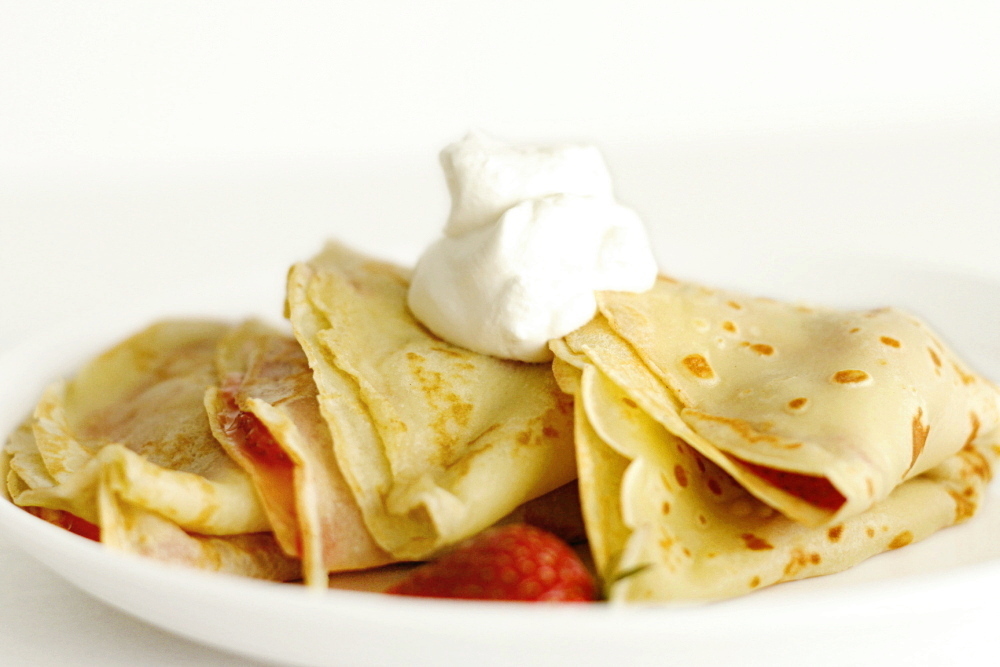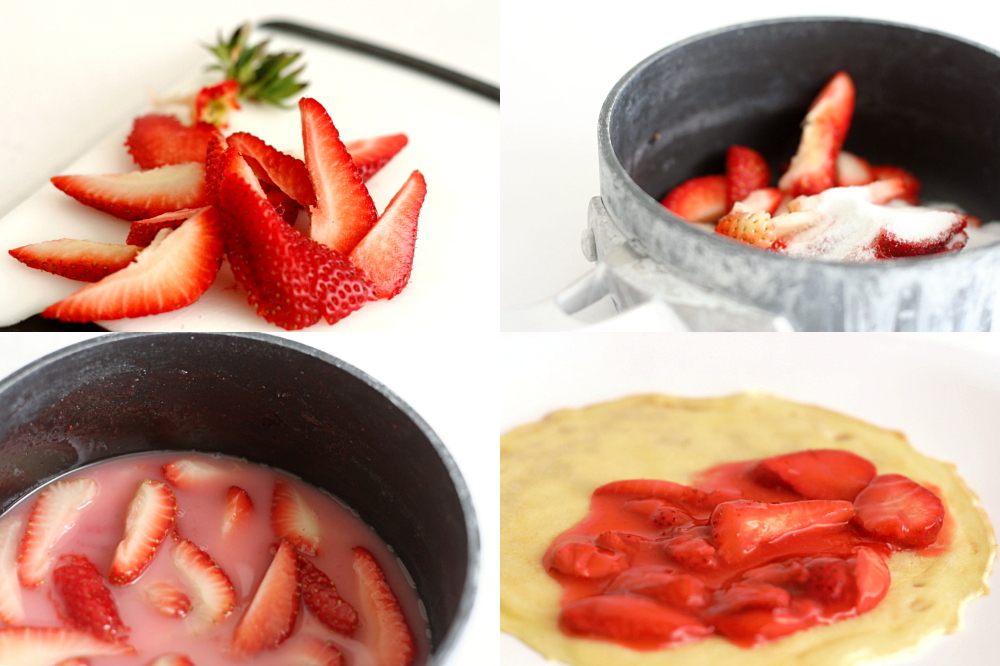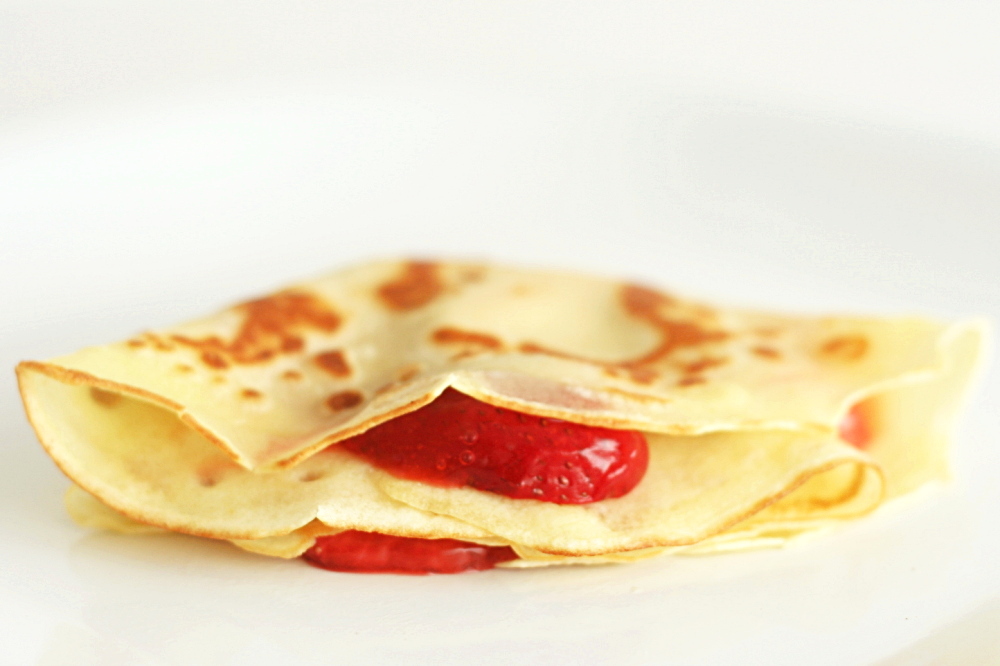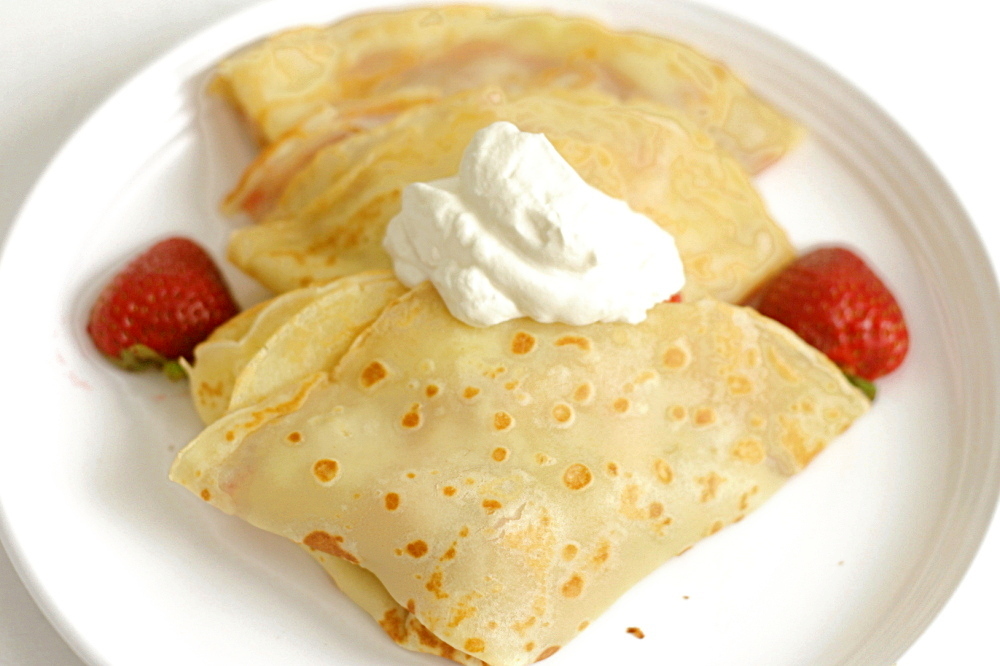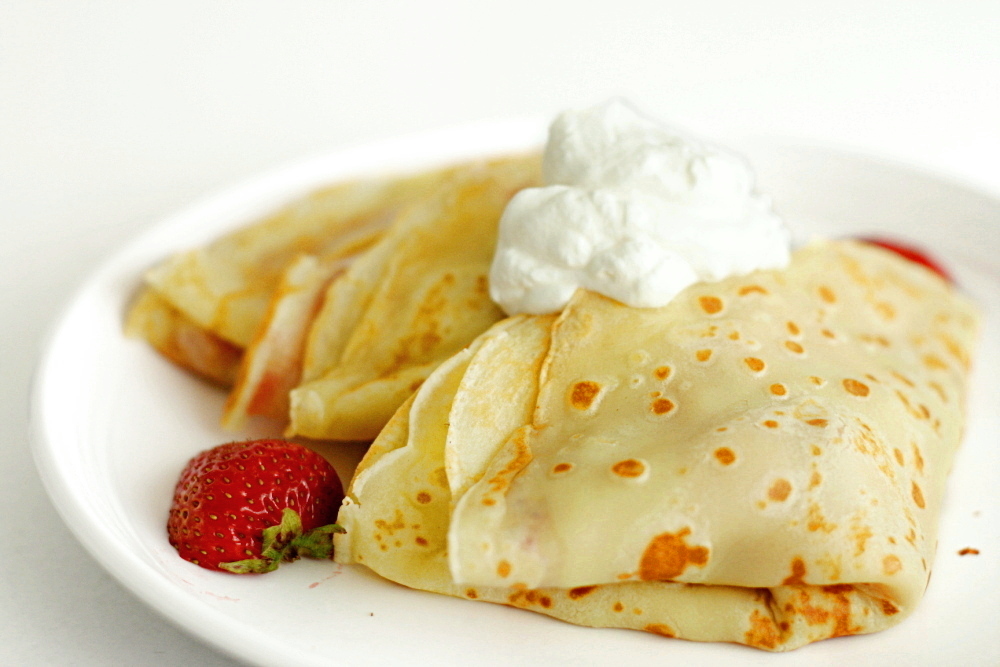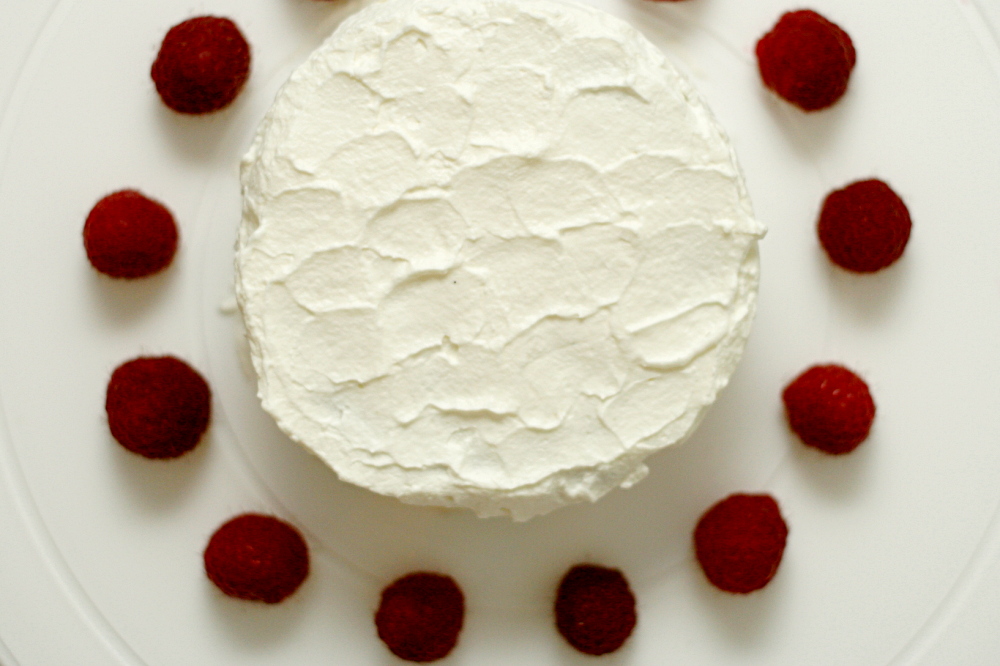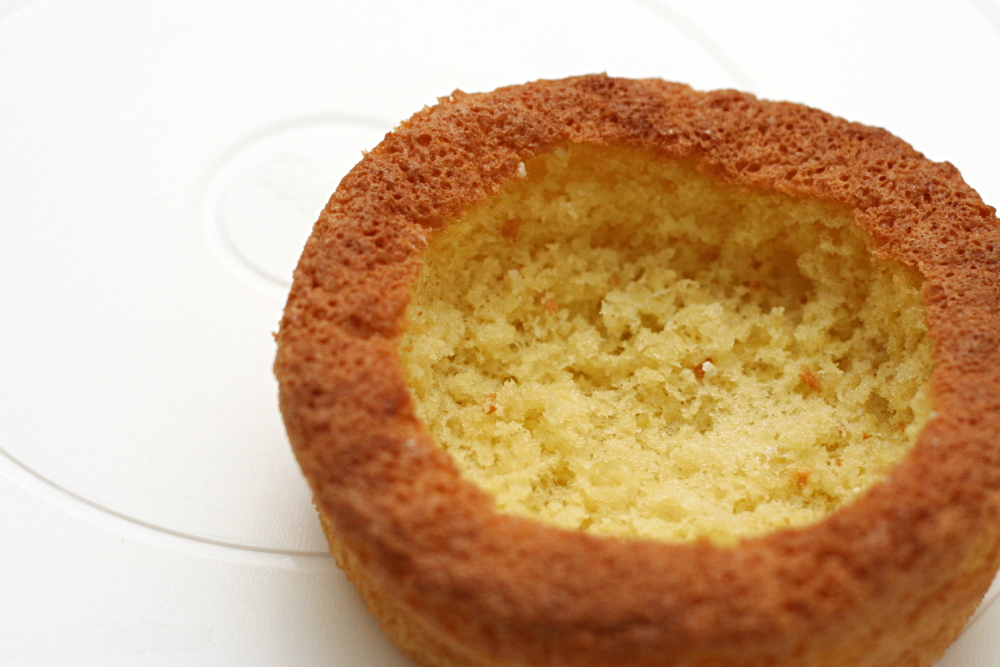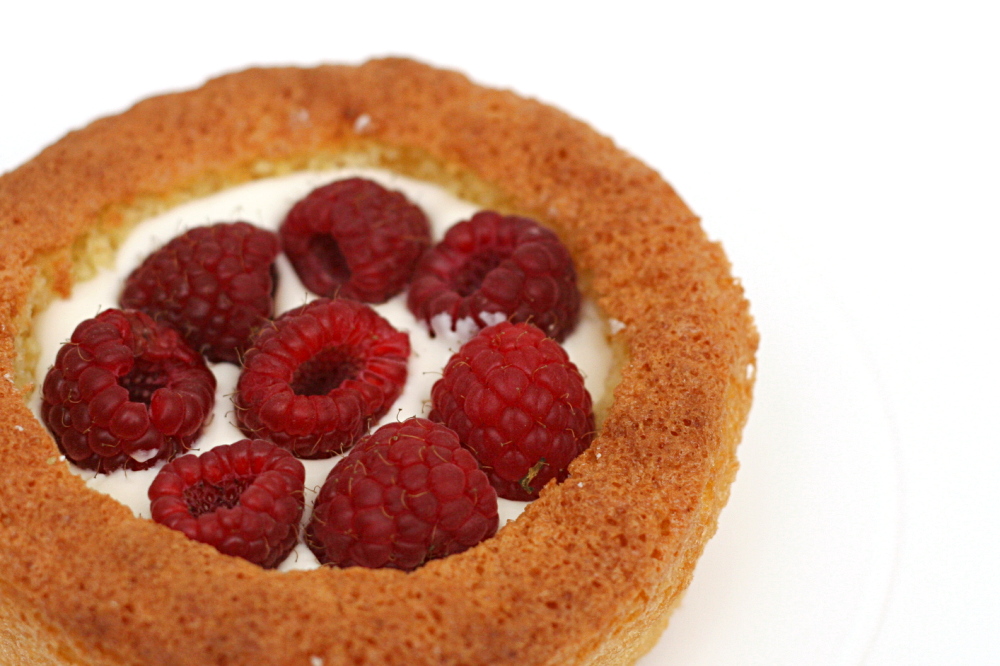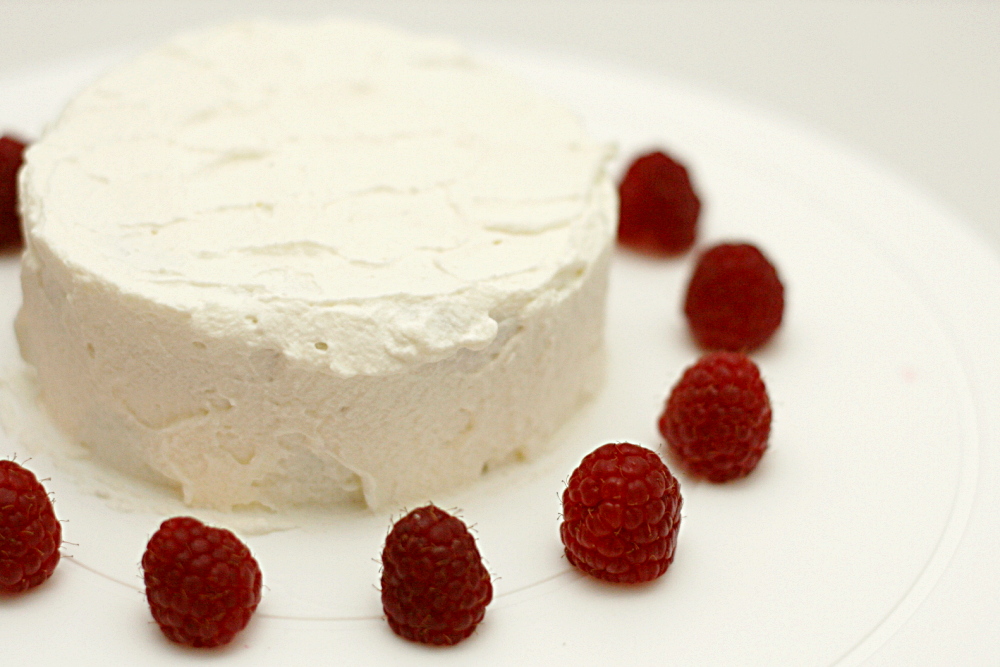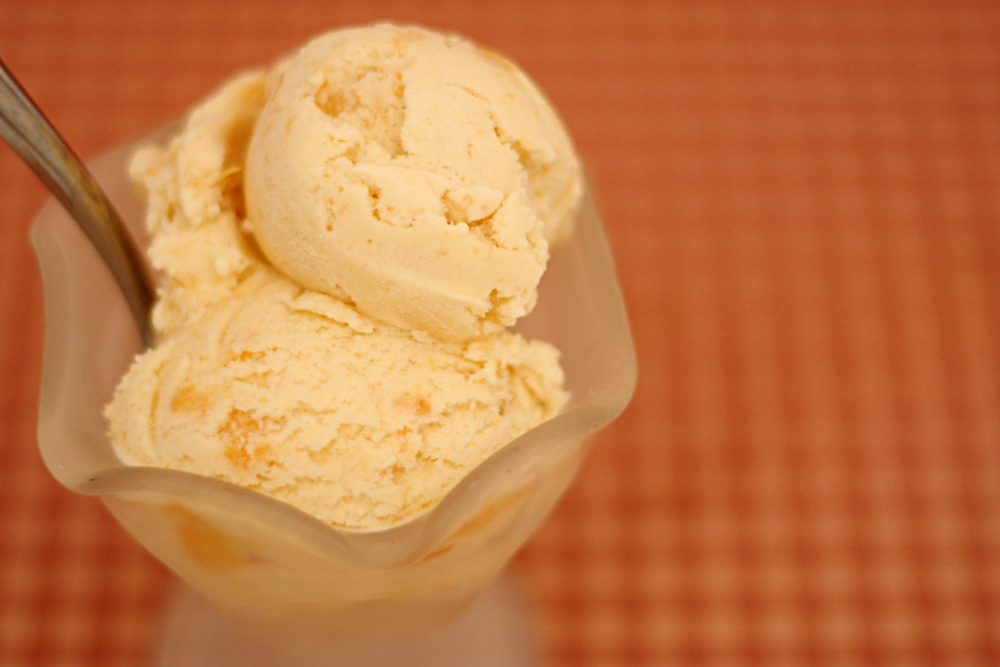
It seems lately that ice cream isn’t really my thing. For one thing, it hurts my sensitive teeth. For another, when it comes to making desserts, I really want to use the mixer. And the oven. And butter and flour and leavening. The blender and the stove? Pbbth! That’s for cooking, not baking. Although watching the ice cream slowly change texture while churning is fun.
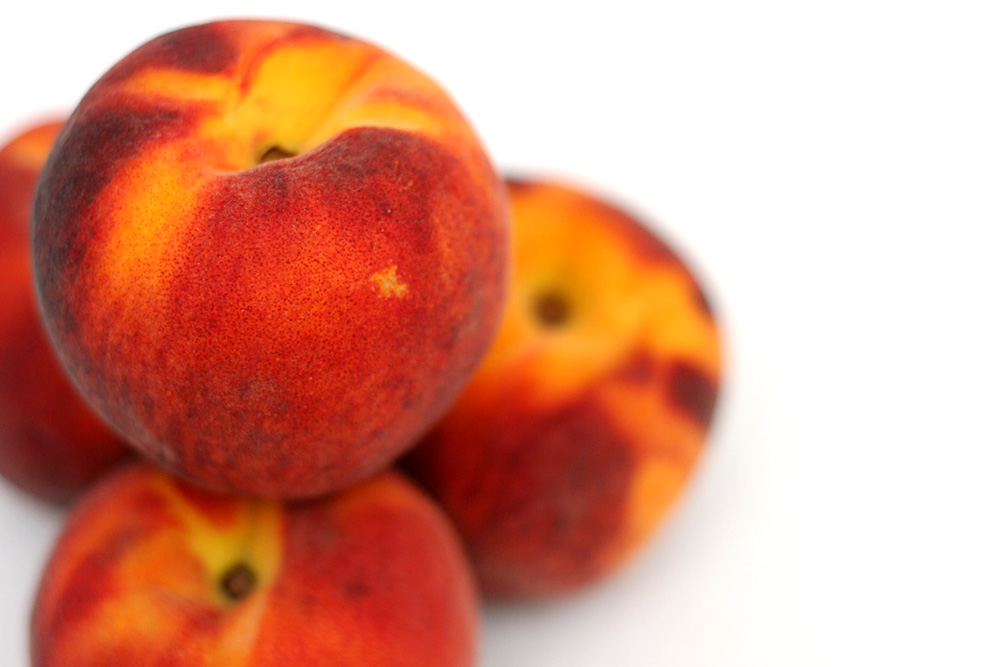
But if I’m making ice cream, at least it’s peach ice cream. It’s the only flavor I remember my mom making as a kid, and I always loved it, even though I thought I didn’t like peaches, picky little brat that I was.
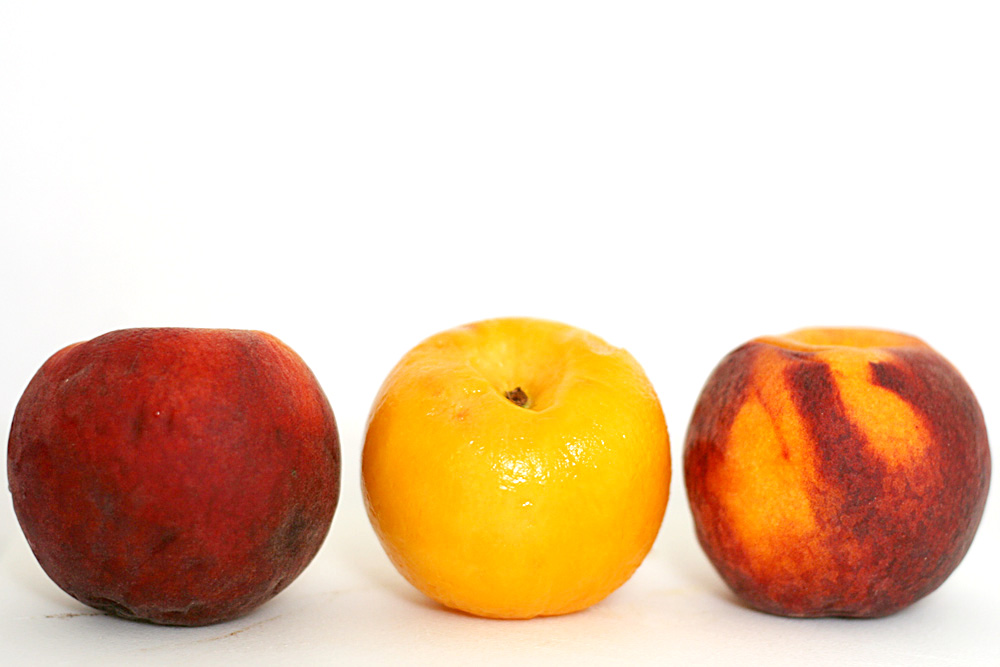
For this ice cream, peaches are softened over low heat with honey, then pureed and made into a custard with egg yolks, sugar, milk and cream. Once the custard is chilled, it’s churned into ice cream, with more peaches, chopped, mixed in at the end.
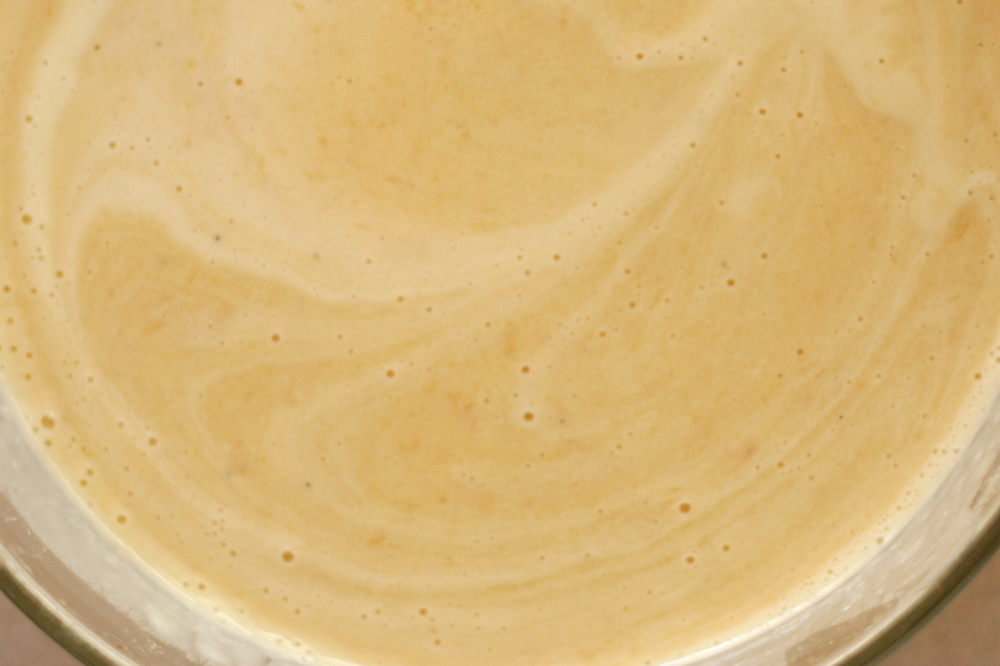
Because I had no desire for peach-flavored ice cubes dispersed throughout my ice cream, I stirred some vodka into the chopped peaches and let them set for a few hours. Hopefully the alcohol would soak into the peaches and keep them from freezing completely.
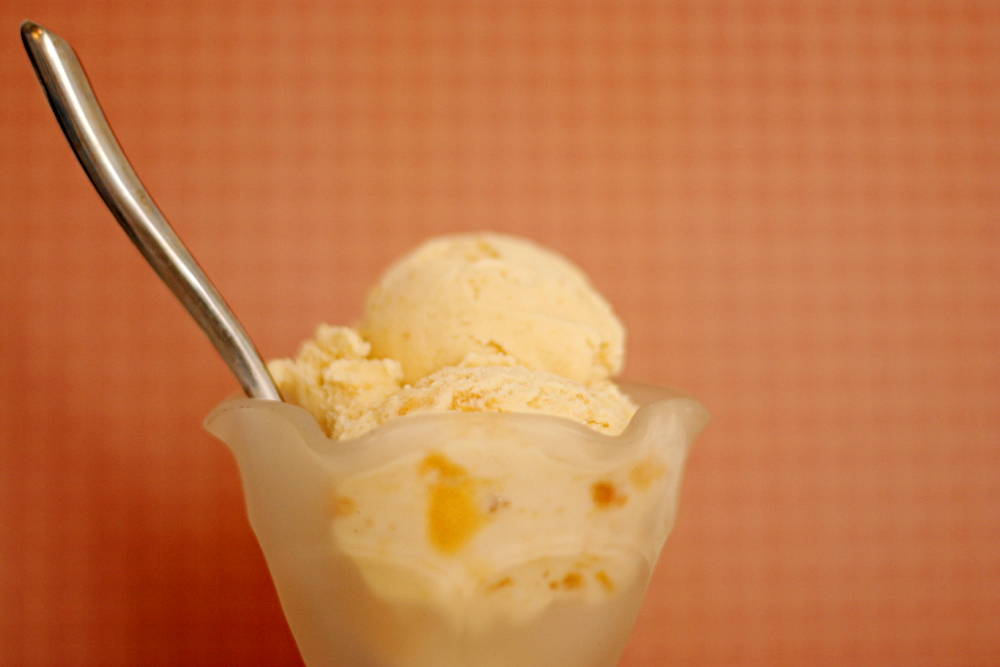
It sort of worked. Nothing is going to stop ice cream from being cold, of course, but at least the peach bits weren’t ice bits. I personally would have still preferred the ice cream without them, but Dave liked them. The custard part of the ice cream was smooth and soft enough to scoop after spending days in the freezer. It tasted pleasantly peachy, although I’m sure the flavor would be improved by more seasonal specimens than I was able to find. I couldn’t really taste the honey, but since I do like honey quite a bit, I think I’m going to start replacing part of the sugar with honey every time I make peach ice cream.
This ice cream was chosen for Tuesdays with Dorie by Tommi, and she has posted the recipe.
One year ago: Deep Dark Chocolate Cookies
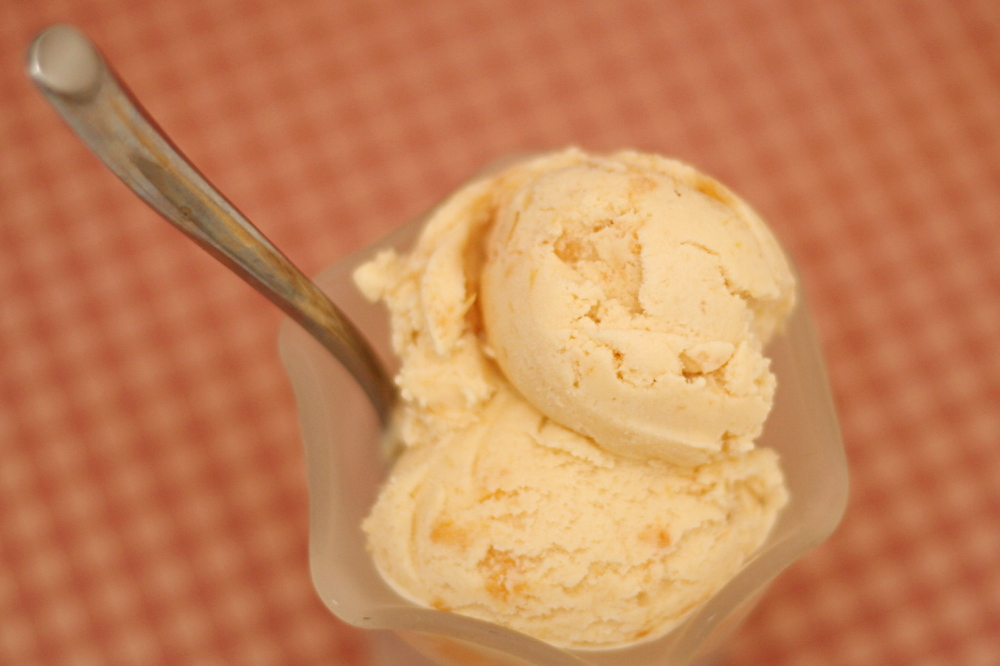
Temporarily or not, the above link doesn’t work for the recipe. So here it is!
Honey-Peach Ice Cream (from Dorie Greenspan’s Baking: From my Home to Yours)
4 large ripe peaches
1/4 cup honey
1 cup whole milk
1 cup heavy cream
3 large egg yolks
1/2 cup sugar
2 tsp vanilla
1. Chop 2 of the peaches into 1/2 inch chunks and toss them in a small saucepan. Add the honey and bring to a boil, lower the heat, cover the pan and cook until the peaches are soft (about 10 minutes). Scrape the mixture into a blender or food processor and puree. Set aside.
2. Bring the milk and cream to a boil in a saucepan. Meanwhile, whisk the yolks and sugar together until blended in a heatproof bowl. Drizzle in a bit of the hot milk mixture to temper the eggs (making sure they don’t curdle). Slowly add the rest of the milk mixture. Pour the milk/egg mixture back into the saucepan and heat while stirring until it thickens. Remove from the heat, pour into a heatproof bowl, and stir in the vanilla and peach puree.
3. Refrigerate the custard until chilled. Scrape into the bowl of an ice cream maker and churn according to the manufacturer’s instructions. While the ice cream is churning, dice the remaining 2 peaches and add them just before the ice cream is thickened. When the ice cream is ready, pack into a container and freeze for at least 2 hours until it is firm enough to scoop.
